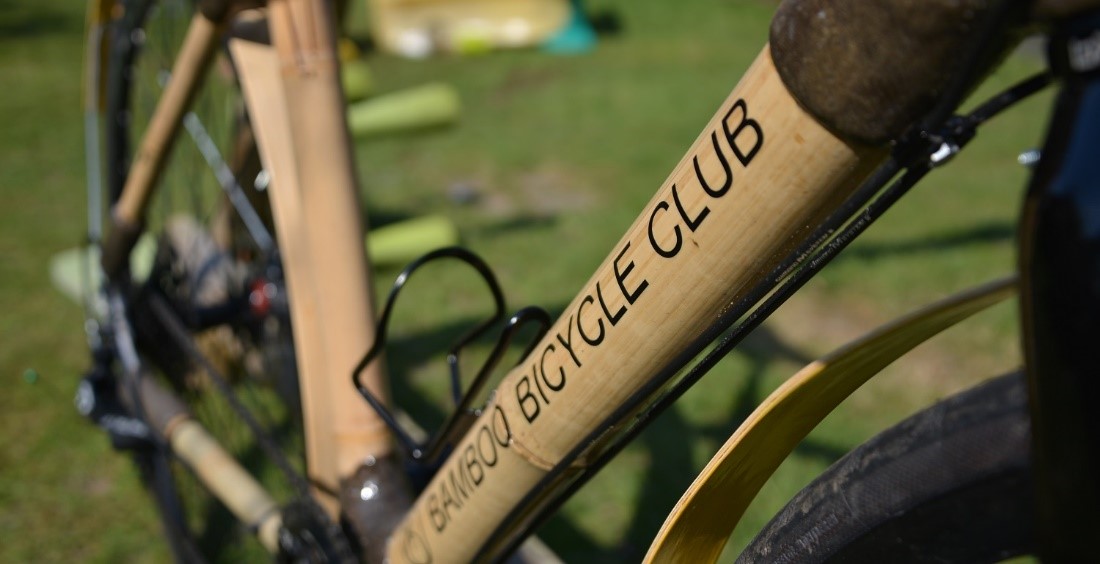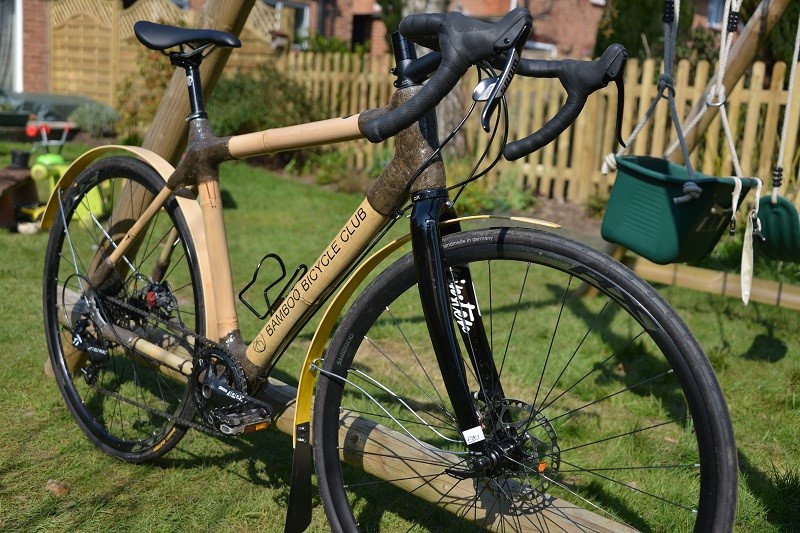
As statements go it can’t get much plainer than this: “Public transport and active travel will be the natural first choice for our daily activities.” The opening bullet point of the ministerial foreword from Secretary of State for Transport, Grant Shapps in the new Department for Transport Decarbonising Transport plan. In order to reduce emissions from transport, we need to reduce our reliance on the car, and single person occupancy of them when driving.
I love my bike and getting out and about on it, especially with my children, but I had always wondered what the environmental impact was of making them. So I was intrigued when I saw that a bike could be made from bamboo. We’re all very familiar with aluminium, steel or carbon fibre for a frame, but bamboo? I’ve used it in the garden to build up tomatoes, but never a bike frame. It is actually a very strong and light material, and you don’t have to look very hard to plenty of pictures of it being used as scaffolding! So when I found out that the Bamboo Bicycle Club based in London run a 4 day workshop during which I could learn how to build a bamboo bike, and ride it away at the end, I was intrigued!

The course begins by picking the bamboo which will become the frame. It is rather strange to pick up many lengths of the stuff, and not only try to work out if it will be strong enough, but also whether it was aesthetically pleasing enough for one’s tastes! Then follows a day of cutting, shaping and carving the bamboo before tacking into the basic outline of the frame. So far, the only metal bits are those that will be the head tube, the seat tube, the bottom bracket or the rear wheel drop outs. These are the points that other parts of the bike come into contact with the frame.

The second day involves creating the joints with a biotex cross weaved flax and a bio-based epoxy resin. Strips of flax have to be cut before being soaked in the epoxy and then wound around each of the joints, before being bound to let the epoxy cure overnight. I struggled to believe it would be strong enough. But then it was pointed out to me that it was exactly same process as carbon fibre manufacture. Funny how a new perspective can change one’s mind!
The final two days are spent sanding down the joints for a smoother finish and to even out any bumps from the flax winding process, before lacquering the frame and fitting all of the bits. At the end of the fourth day I had a bike ready to ride away. A nice touch was the option of adding graphics to the frame. We were allowed to do anything we liked. But to avoid possible pretentiousness, I of for a simple “Bamboo Bicycle Club”.
One last touch came after the workshop: bamboo laminate mudguards, made from six strips of bamboo veneer glued with PVA glue and bound to a former to dry into shape. The bike comes in about 12 kg, which is the same weight as my other aluminium bike. Not the lightest, but given that I did not have a final weight in mind when building, it is really quite creditable! In principle they could be much lighter. The ride is forgiving for road bumps, and surprising agile and nippy off the lights. All in all, it’s good fun to ride! The finished product looks like this.

I had been wondering how a bamboo bike might rate for sustainability. First we will ignore the fact that because it is a bike, it is immediately more sustainable as a mode of transport than many motorised vehicles! So let’s skip that (incredibly important) factor, and look at what else it means for sustainability.
In terms of environmental impact, the bamboo creates less impact that either steel or aluminium across most impact categories. So the material is certainly a good choice compared to the other options.
Regarding social impact, bamboo had the potential to be beneficial too. Bamboo is not typically going to grow in the UK to the strength required. Therefore, it is going to need importing from more tropical countries, giving the potential to provide an income for the locals. And any social impacts will be an improvement over industrial mining of metal ores.
The economic aspect is one that I find trickier to reconcile. Bamboo is a natural material, and if used as is, needs the human touch to turn it into a frame. The will and labour input is always going to keep prices up, and hamper the uptake of the bikes to a mainstream audience. Having said that, from the four day workshop I personally gained a great bike, a great experience to remember, and a huge amount of confidence and knowledge about building bikes. Therefore, for me the workshop was very good value for money, because of the other things it have me on top of the bike.
Building a bamboo bike will not be for everyone, but with a growing need for personal transport, and a growing awareness of how our everyday lives create environmental impact will likely make them more mainstream. But there will always be a place for the metal cousins.
